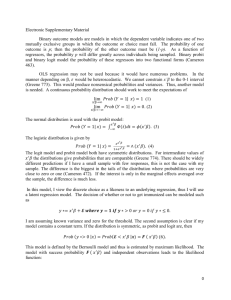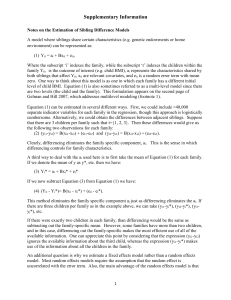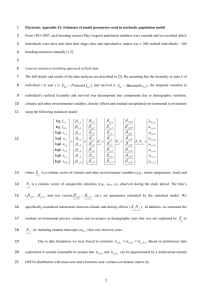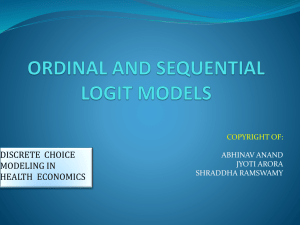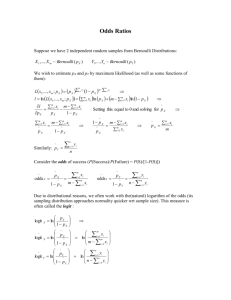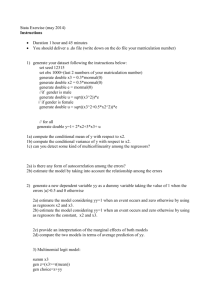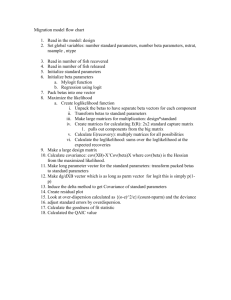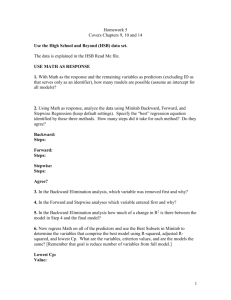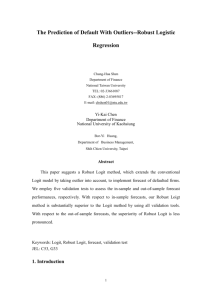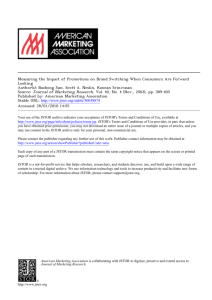2005-11-17 Multiple testing
advertisement
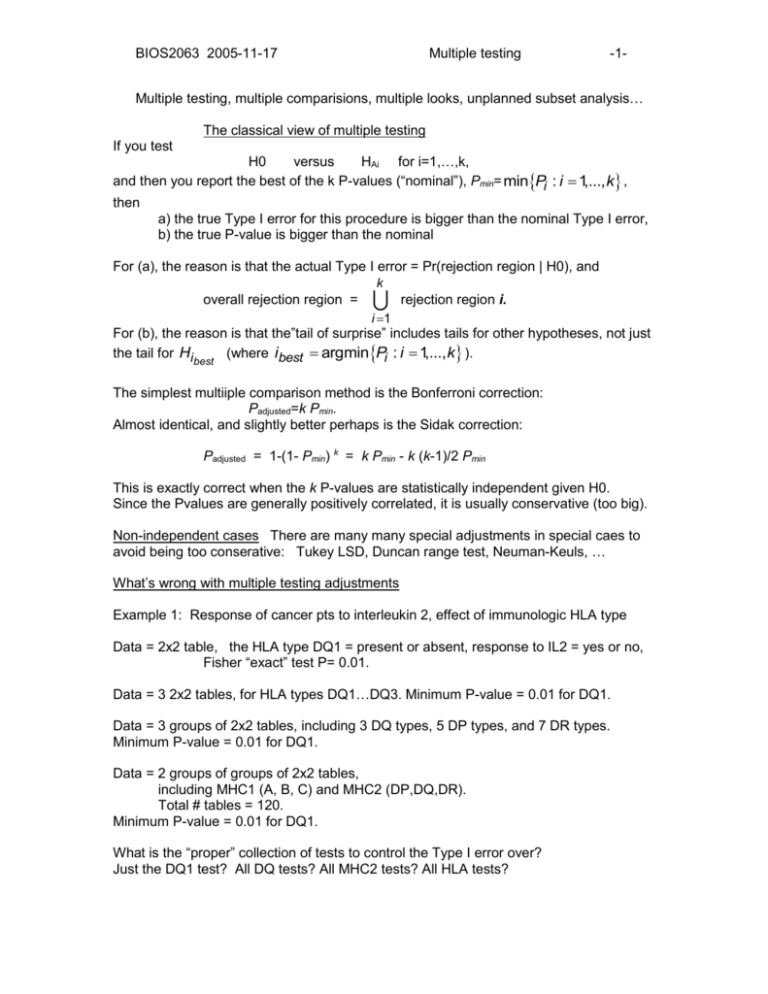
BIOS2063 2005-11-17 Multiple testing -1- Multiple testing, multiple comparisions, multiple looks, unplanned subset analysis… The classical view of multiple testing If you test H0 versus HAi for i=1,…,k, and then you report the best of the k P-values (“nominal”), Pmin= minPi : i 1,..., k , then a) the true Type I error for this procedure is bigger than the nominal Type I error, b) the true P-value is bigger than the nominal For (a), the reason is that the actual Type I error = Pr(rejection region | H0), and k overall rejection region = rejection region i. i 1 For (b), the reason is that the”tail of surprise” includes tails for other hypotheses, not just the tail for Hi (where ibest argminPi : i 1,..., k ). best The simplest multiiple comparison method is the Bonferroni correction: Padjusted=k Pmin. Almost identical, and slightly better perhaps is the Sidak correction: Padjusted = 1-(1- Pmin) k = k Pmin - k (k-1)/2 Pmin This is exactly correct when the k P-values are statistically independent given H0. Since the Pvalues are generally positively correlated, it is usually conservative (too big). Non-independent cases There are many many special adjustments in special caes to avoid being too conserative: Tukey LSD, Duncan range test, Neuman-Keuls, … What’s wrong with multiple testing adjustments Example 1: Response of cancer pts to interleukin 2, effect of immunologic HLA type Data = 2x2 table, the HLA type DQ1 = present or absent, response to IL2 = yes or no, Fisher “exact” test P= 0.01. Data = 3 2x2 tables, for HLA types DQ1…DQ3. Minimum P-value = 0.01 for DQ1. Data = 3 groups of 2x2 tables, including 3 DQ types, 5 DP types, and 7 DR types. Minimum P-value = 0.01 for DQ1. Data = 2 groups of groups of 2x2 tables, including MHC1 (A, B, C) and MHC2 (DP,DQ,DR). Total # tables = 120. Minimum P-value = 0.01 for DQ1. What is the “proper” collection of tests to control the Type I error over? Just the DQ1 test? All DQ tests? All MHC2 tests? All HLA tests? BIOS2063 2005-11-17 Multiple testing -2- Example 2: “Comparisons of a priori interest” Testing 6 methods of measuring echocardiograms—are they equivalent? 6x5/2 = 15 comparisons Nominal P for method B versus method C = 0.01. But not “of a priori interest”, so P = 15 * 0.005 = 0.075, “not significant”. But now investigator states “the comparisons of a priori interest were: A versus D, A versus E, A versus F, D versus E, D versus F, E versus F Now the adjusted P values for B versus C is P = (15-6) * 0.005 = 0.045, “significant”. Example 3: ECOG 5592 cooperative group clinical trial Arms: (A) etoposide + cisplatin, (B) taxol+cisplatin+G-CSF, (C) taxol+cisplatin. Should multiple comparisons adjustments be made? Which ones? The mystery answer: “four comparisons B > A, C > A, B > C, C > B so the required significance level will be 0.05 / 4 = 0.0125”. Bayesian philosophy Likelihood Principle You inference about H1 may be affected by your inference about H2, but not by the fact that you are doing an inference about H2. Example: Response rates dependent on hair color Suppose that the comparisons of interest are: H0: the response rate is 10% vs HA: the response rate > 10% H0D: the response rate | Dark is 10% vs HAD: the response rate | Dark > 10% H0L: the response rate | Light is 10% vs HAL: the response rate | Light > 10% Frequentist responses: H0D vs HAD etc are not prespecified- don’t do them. H0D vs HAD etc are not prespecified- do them only if H0 vs HA is significant. Do them all, Bonferroni H0D vs HAD and H0L vs HAL by 2. Do them all, Bonferroni H0D vs HAD and H0L vs HAL by 3. Do them all, don’t Bonferroni, don’t tell anybody. BIOS2063 2005-11-17 Multiple testing -3- A Bayesian approach: MODEL: logit(response | hair) = + hair. PRIOR: ~ N( 0 , ) , hair ~ N(0, ) . Note: this is the kind of prior we needed before. Note: corr ( dark , light ) / . Reasonable values might be 0 = logit(0.10), =1, =1. LIKELIHOOD (approximate): logit( pˆ ) logit( p) ~ N(0, (#responders)-1 (#nonresponders)-1) This is a hierarchical Bayes model. JOINT DISTRIBUTION logit(pdark ) 0 0 logit(plight ) ~ N , logit(pˆ ) 0 dark logit(pˆ light ) 0 1 1 nRD nND 1 1 nRL nNL POSTERIOR: logit(pdark ) logit(plight ) | Edark logit(pˆdark ) ~ N Elight ˆlight ) logit( p , Vdark Cov Cov Vlight The posterior means are Edark Elight 1 1 0 nRD nND 1 1 n n 0 RL NL 1 logit(pˆdark ) 0 ˆ logit(plight ) 0 The posterior variance matrix is Vdark Cov Cov Vlight 1 1 nRD nND 1 1 nRL nNL 1 For our data and the prior above, Edark Elight 0.38 logit 0.06 Vdark Cov Cov 1.53 0.97 Vlight 0.97 1.83

